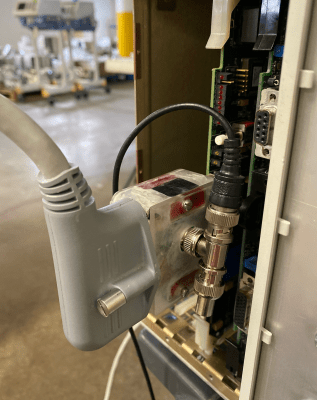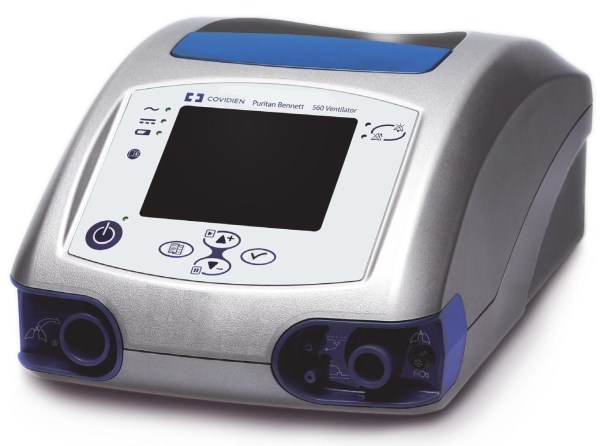We have a new hero in the COVID-19 saga, and it’s some hacker in Poland. Whoever this person is, they are making bootleg dongles that let ventilator refurbishers circumvent lockdown software so they can repair broken ventilators bought from the secondhand market.
 The dongle is a DIY copy of one that Medtronic makes, which of course they don’t sell to anyone. It makes a three-way connection between the patient’s monitor, a breath delivery system, and a computer, and lets technicians sync software between two broken machines so they can be Frankensteined into a single working ventilator. The company open-sourced an older model at the end of March, but this was widely viewed as a PR stunt.
The dongle is a DIY copy of one that Medtronic makes, which of course they don’t sell to anyone. It makes a three-way connection between the patient’s monitor, a breath delivery system, and a computer, and lets technicians sync software between two broken machines so they can be Frankensteined into a single working ventilator. The company open-sourced an older model at the end of March, but this was widely viewed as a PR stunt.
This is not just the latest chapter in the right-to-repair saga. What began with locked-down tractors and phones has taken a serious turn as hospitals are filled to capacity with COVID-19 patients, many of whom will die without access to a ventilator. Not only is there a shortage of ventilators, but many of the companies that make them are refusing outside repair techs’ access to manuals and parts.
These companies insist that their own in-house technicians be the only ones who touch the machines, and many are not afraid to admit that they consider the ventilators to be their property long after the sale has been made. The ridiculousness of that aside, they don’t have the manpower to fix all the broken ventilators, and the people don’t have the time to wait on them.
We wish we could share the dongle schematic with our readers, but alas we do not have it. Hopefully it will show up on iFixit soon alongside all the ventilator manuals and schematics that have been compiled and centralized since the pandemic took off. In the meantime, you can take Ventilators 101 from our own [Bob Baddeley], and then find out what kind of engineering goes into them.













